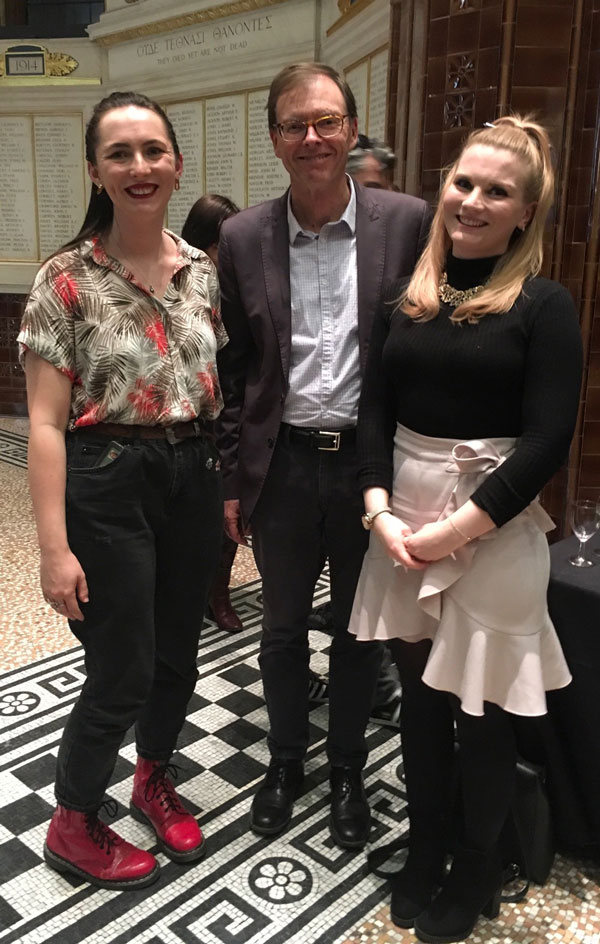Guest speaker: Exploring evolution and entanglement
Posted on: 8 March 2019 by Emily Prtak and Eleanor de Spretter Yates in 2019 posts

Two of our graduate students in Archaeology, Emily Prtak and Eleanor de Spretter Yates, reflect on our recent Archaeology, Classics and Egyptology (ACE) flagship seminar, on the theme of 'Evolution and Entanglement' featuring guest speaker Professor Ian Hodder (Stanford University):
"The flagship seminars are an opportunity for the disciplines within ACE - and many others besides - to exchange wider ideas. By way of preparation, a small group of staff and students from across the ACE department, held weekly meetings to discuss Prof. Hodder’s book, Entangled. This fostered lively debate, prompting a series of questions about entanglement and its application to our own research.
Practical application of entanglement theory
The flagship seminar, in the stunning setting of the Victoria Gallery and Museum, crystalised our understanding of a practical application of entanglement theory. Hodder explained how he sees things, including objects, environment, and people, as processes that coalesce at geographical and/or temporal nodes. Processes of human development are often discussed as “ideas in people’s heads”. Although persistence of practice can result from factors such as “habitus, history making, and will to power based on ancestry” (Hodder), we also need to consider the material entanglements and limitations on human agency.
Professor Hodder highlighted changing house forms at his field-site Çatalhöyük as an example of this in practice. Development of more efficient cooking technologies gave individuals more time for other household activities, and people changed the internal layout of the space to accommodate this. However, the external walls depended on the strong foundations of previous structures, therefore the external footprint of houses at Çatalhöyük remained largely uniform.
Hodder’s presentation was followed by thought-provoking responses from Evolutionary Anthropologist Prof. Larry Barham and Egyptologist Dr Violaine Chauvet (both University of Liverpool). Prof. Barham questioned whether the persistence and possible instinctiveness of the hand axe could be resolved with entanglement theory. On reflection we think that although the hand axes developed and changed very little over a much longer period of time than post-Neolithic examples, dependency on the hand axe stemmed from, and resulted in, increasingly complex entanglements.
The suppression of female voices
Dr Chauvet’s rich contribution raised questions about entanglement theory’s application to the integration of textual and material evidence, and how it can help us work with gaps in evidence caused by restriction of knowledge and silencing of voices - the suppression of female voices, for instance, is a persistent problem in contemporary academia as well as in the ancient past. Hodder replied that this can be seen in tanglegrams: an individual in a key position between nodes can ‘control the threads’ connecting nodes to repress and exert control over sections of society, including women and other marginalised groups.
The floor was opened up for questions, ending with an important point raised by Hannah Plug (University of Liverpool): How can we deal with evidence lost from the archaeological record? Professor Hodder responded that we should try to select evidence rich sites and work outwards from these, extrapolating information that can be applied other places. We wonder if entanglements at one site can be generalised in this way but agree that entanglement theory has the potential to deal with absence of evidence on a site by site basis, applying entanglement theory to develop informed and evidence-based hypotheses as to what would likely to fill gaps in the evidence.
Discover more
- See how the talk unfolded on Twitter here
- View upcoming events in the Department of Archaeology, Classics and Egyptology
- Study archaeology, classics or Egyptology with the University of Liverpool
Keywords: Archaeology, Study, Liverpool, University, Research, Evolution.